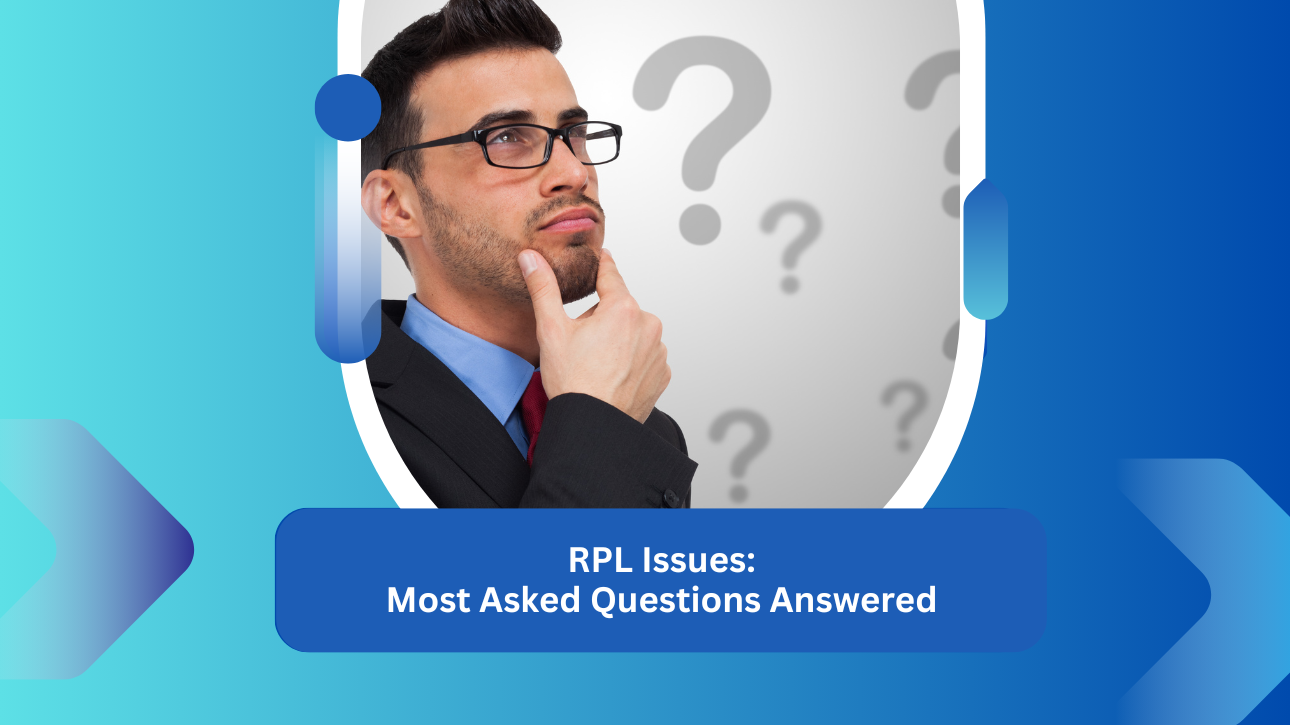Ever get a wave of dread when you see an RPL application land on your desk? RPL assessments can be complex and time-consuming, and getting them wrong exposes your RTO to compliance risks.
RPL should be a valuable tool in your arsenal, ensuring experienced learners get the qualifications they deserve. Yet, many RTOs struggle with streamlining the process, maintaining high quality standards, and ensuring candidates have a positive experience.
This blog aims to be your indispensable guide to navigating the world of RPL in Australia. We’ll cover FAQs for making RPL a win-win for your RTO and your learners.
FAQs
A.1. RTOs must offer RPL to all learners, have fair and equitable RPL policies and procedures, ensure assessors have the skills and knowledge to conduct RPL, and maintain detailed records of RPL assessments for audit purposes.
A.2. Yes, the fees can be different than standard course fees, but they must be transparent, published, and reflect the true cost of conducting RPL assessments. Avoid creating financial barriers that would discourage applicants.
A.3. Streamline processes with clear pre-assessment tools, develop templates and guidelines for candidates to improve evidence quality, and consider technology solutions to track RPL assessments efficiently. Partnering with experienced RPL specialists can also be a cost-effective option.
A.4. Common challenges include candidates with difficulty organising or presenting evidence, gaps in skill or knowledge despite experience, and outdated work experience that doesn’t align with current standards.
A.5. Provide clear guidance on acceptable evidence types from the outset, offer pre-assessment support, and work with candidates to explore alternative evidence options if initial offerings are inadequate. If gaps persist, design gap training plans for the candidate.
A.6. This might be eligible for Credit Transfer rather than RPL. Credit transfer recognises formal learning gained through another institution, while RPL assesses skills and knowledge from work and life experience.
A.7. Credit Transfer is the process of having units of competency from previous study recognised towards your current qualification. It reduces the number of units you need to complete, saving time and money.
A.8. ASQA conducted a thematic review of RPL practices in 2017-2018. The key findings highlighted areas like insufficient evidence, inadequate RPL assessor knowledge, and inconsistent RPL practices across RTOs.
A.9. Industry views RPL favourably when conducted well. It helps address skill shortages, upskills the workforce, and recognises valuable experience. However, inconsistent quality in RPL can undermine its reputation.
A.10. This depends on complexity. It can be cheaper than a full course if the candidate has comprehensive evidence. However, if there are gaps or the process is lengthy, it can be comparable or even exceed full course fees.
A.11. Evidence must align with unit of competency requirements. This can include work samples, project portfolios, third-party reports, testimonials, or demonstrations of skills.
A.12. If significant gaps are identified, provide clear feedback and options. They may need short gap training courses or further work experience before re-applying for RPL.
A.13. Under the Standards, they have the right to seek RPL from another RTO. Provide the candidate with transcripts and detailed RPL outcome records to facilitate a smooth transition.
A.14. Yes, but to avoid conflict of interest, use an independent assessor. This ensures the RPL process remains fair and impartial.
A.15. Yes, superseded but non-equivalent units can contribute to RPL for a current unit. Crucially, you must focus on currency. Assess the candidate’s up-to-date skills and knowledge against the current unit requirements. If the superseded unit provides a foundation, the candidate might need to provide supplementary evidence to prove they meet current competency standards.
NOTE: If the superseded unit is deemed EQUIVALENT, it would usually qualify for Credit Transfer, not RPL.
A.16. The Standards mandate that you offer RPL, and the decision depends on the learner’s individual needs. A truly skilled applicant may be able to pass RPL without traditional training. However, consider complexity, currency and gaps.
A.17. Yes, the Standards require RPL for individual units unless training package or licensing rules explicitly forbid it. Here’s why these matters when units are clustered:
- Overlapping Skills: A candidate might demonstrate proficiency across the whole cluster through RPL, saving them time and money.
- Partial RPL: Your assessment mapping should show if RPL covers some unit requirements but not others, allowing for targeted training on the remaining areas.
Conclusion
RPL doesn’t need to be a headache. Remember, quality RPL benefits everyone. When done well, it validates learner experience, fills skills gaps faster, and boosts your RTO’s reputation in the industry.
Disclaimer:
The information presented on the VET Resources blog is for general guidance only. While we strive for accuracy, we cannot guarantee the completeness or timeliness of the information. VET Resources is not responsible for any errors or omissions, or for the results obtained from the use of this information. Always consult a professional for advice tailored to your circumstances.






